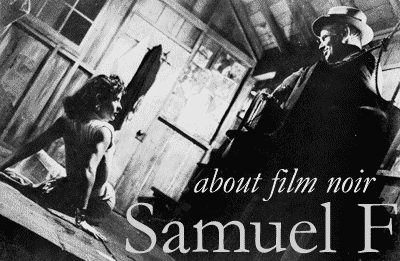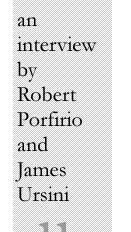 | Constance Towers stars in The Naked Kiss.
[click photo for larger version] |
Q: So you were most interested in realism?
Fuller: Oh, yeah. I researched every milieu. If I were to do a movie tomorrow about a fashion designer, say, I would have to spend some time to find out what language they spoke. Because I would never be satisfied with my dialogue, I want something that gives you the color of that character right away.
In The Naked Kiss, I had more time than with Pick-up to work on that. But you also have to create interest. The Constance Towers character wants to rise above her station, quotes from books. That's all to make an impression. A real hooker would not be interested in any of that. It wouldn't mean anything unless it made money for her. A whore-house story is always great. Just great! The way they hang around and discuss the men and pull together in their outlook. Hollywood could never deal with that. And television has a different kind of whore: they all have Black pimps. No Black pastors, teachers, bus drivers--they're all pimps. I don't understand it. And this is coming into people's homes...
In The Naked Kiss I had to rewrite a scene, and I resented it. The Shurlock office, the new version of the Breen and Hays Offices, the "censor," didn't like the speech Constance Towers made at the end. This was the first time I used profanity, and my argument was that this real profanity suggests the depth of her anger. She is not trying to be dirty if she says, "I moved to this town to get away from shit." Then she realizes that the Chamber of Commerce, the American Legion, the D.A.R., that's the real shit. Of course, the censors suggested that I should use another word and not mention the D.A.R. etc. So I said the hell with it, I need to get a [Motion Picture Code] Seal or this movie doesn't get released.
Being a hooker does not mean being evil. The same with a pick-pocket, or even a thief. You do what you do out of necessity. The people who look down on you are just prejudiced, like the townspeople who deride Constance Towers when they think she's a killer and find out about her past and then cannot face her when they discover she actually did something heroic. That's what I wanted to show and that's what I thought was shocking. The irony was a woman who has struggled, finds what she thinks is happiness, the whole nine yards, then finds out it's all a lie. After it's all smashed to bits, she can still pick up the pieces because she still has her own integrity. But nobody got it. It went over like a lead balloon, probably because it was too shocking and distasteful.
Q: Did you have a style in mind in any of these films, were you aware of film noir?
Fuller: When I was making these damned pictures, I never knew about film noir. If you had asked me about it then, I probably would have pointed to something like Bill Wellman's Oxbow Incident, the best Western I ever saw and very much in the style of film noir. To get back to what you said about milieu, I don't care if it's a mystery story, a Western, or the story of Julius Caesar. To me it's the emotion, the lies, the double-cross, whether it's Brutus doing it to Caesar or Bob Stack doing it to Robert Ryan [in House of Bamboo] that defines what kind of drama it is.
I wanted that world, where people lived on the edge, to be very isolated. Not many people, lots of close-ups, focused on the people. With Jean Peters, I wanted to be able to move with her. I told the cameraman to "keep it loose." Movement should be a counter, whether in action scenes or dialogue or whatever. It counters where your eye is going. This style thing, for me it's all fitted to the action, to the script, to the characters.



